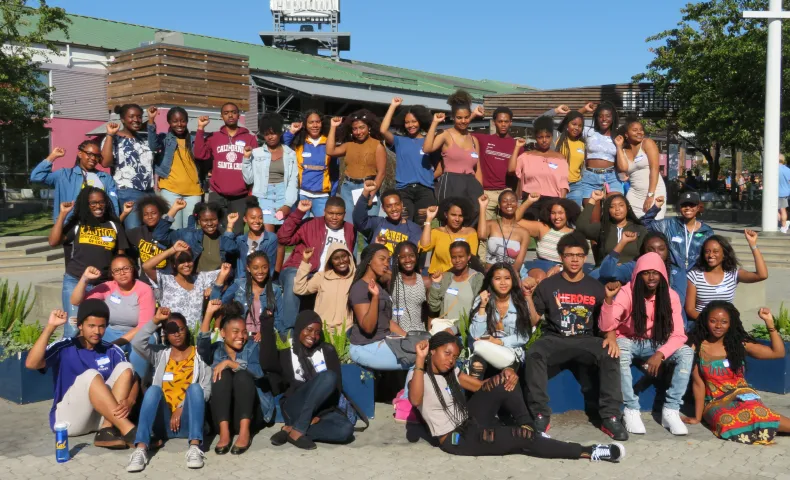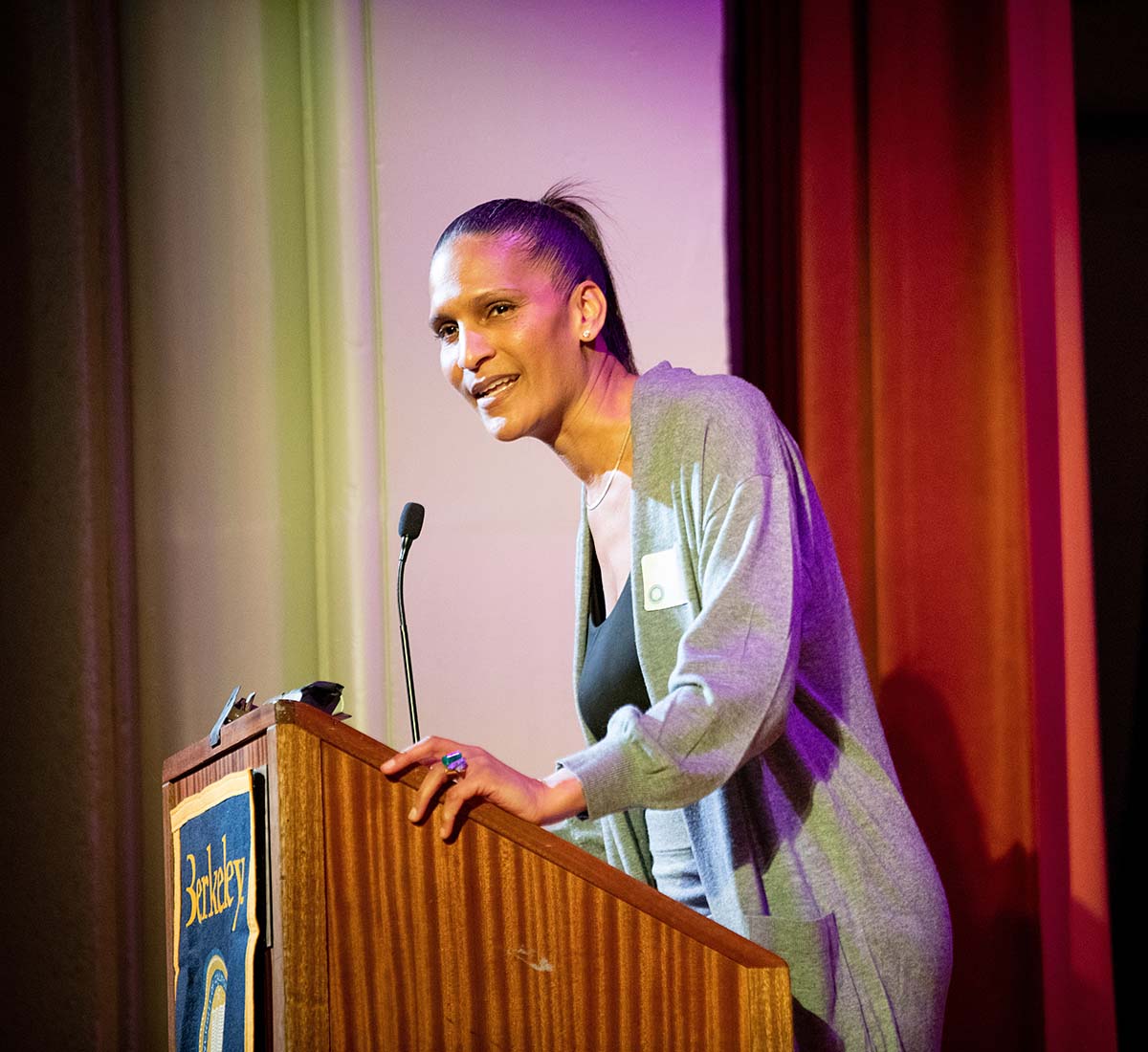
A Black Community Space at Cal
When Takiyah Jackson was walking around the UC Berkeley campus recently with her five-year-old son, he asked why there were so few Black people on the campus. “If that’s the first question in a five-year-old’s mind, then imagine what it feels like to navigate your way around Berkeley and other elite schools as an 18-year-old Black undergraduate,” Jackson said.
It’s a question that cuts to the core of Jackson’s work creating a sense of belonging and community for Black students at UC Berkeley. Jackson serves as director of Berkeley’s African American Student Development Program and Fannie Lou Hamer Black Resource Center. In those dual roles, she oversees a range of programs and initiatives providing scholarships, programs and support for Black students at a university where they are around 4% of all undergraduates. That’s down from a high of 7.4% in the years before California voters in 1996 approved Proposition 209 banning affirmative action in public education and other areas.

We recently spoke with Jackson about her work at the university, where the Haas, Jr. Fund has been a longtime supporter of efforts (such as the Center) designed to advance the goals of diversity, equity, inclusion, and belonging.
Q: Can you share the story of how the Fannie Lou Hamer Center came to be?
Jackson: The origins of the center go back to the late 1980s when Black students at the university were feeling that their experience here did not align with the experiences of their peers. They saw themselves as isolated, they felt they were not reflected in the faculty and the student body, and they lacked services and support to help them thrive.
As a result of student activism on these issues, UC Berkeley appointed its first director of African American Student Development in 1989. But even as the university expanded services and support for Black students, there was still no dedicated space for them. For many years Black students were gathering informally on campus at an outdoor space known as the Black Wednesday Wall. As Black students continued to speak up and protest for more belonging and more equity on campus, they issued a list of 10 demands for the university. One of those demands was for a Black community space.
The Fannie Lou Hamer Black Resource Center opened in 2017—it was a big win for the community. It was designed with and for Black students, and it’s become a real meeting place and support space for the entire community.
Q: Why is it so important for UC Berkeley and other universities to provide these kinds of dedicated spaces for Black students?
Jackson: Black students at Berkeley and other elite universities describe the same experiences again and again. They are the only Black person in a class, or they are not invited to be in a study group, or they do not feel represented when they look around at their residence halls or at their professors or at the bigger campus around them. Most students don’t understand what a privilege it is to walk around and see a lot of people who look like you. But Black students at most universities, including ours, don’t have that experience. A place like the Fannie Lou Hamer Center provides Black students with somewhere they feel they belong.
And it’s also a place where Black students can build community. If you walk into the center on a normal day, you’ll see students coming together and socializing, doing homework, playing games. It’s a place where students can take care of each other and share notes on the classes they’re taking or what’s happening in their lives. It’s also a meeting place for more than 30 Black student organizations on campus. There are evening events and workshops and information sessions on wellness and finances and study abroad programs. There’s something different happening every day.
Q: How did you find your way to this work?
Jackson: I come from a background of community engagement. When I was growing up in Seattle, my grandmother helped set up a house next to her church so women could live there when they were coming out of prison. My mom and dad carried on the tradition of service and ended up as educators and school administrators.
I always thought I would be a sports reporter or commentator. I was recruited to play basketball at UCLA. But over time I got more and more interested in putting together community programs and filling deficits I saw in services and supports for the people around me.
After getting a master’s degree in counseling I worked in the Seattle schools to build support programs for students and incorporate social and emotional education more fully into the curriculum. Later I was appointed by the state governor to a policy board focused on teacher preparation. In 2016, I decided to move to Oakland, where my partner was already working. Before long, people reached out to me to say that Berkeley was looking for someone to run the African American Student Development program. It was a great fit for me, and I became the interim director in 2017 and full-time director in 2018.
Q: What are your priorities for the future of the African American Student Development Program and the Fannie Lou Hamer Center?
Jackson: At UC Berkeley, we are committed to becoming an anti-racist campus. That means chipping away, one block at a time, at the institutional and systemic barriers that stand in the way of Black students thriving. First, we want to improve recruitment of Black students by using social media and storytelling and videos to celebrate all of the Black joy that is happening here. We’re also being much more intentional about going out into our local community to show Black students and families they have a place here.
At the same time, we’re adding new programs and expanding scholarships for Black students all the time. And we’re growing our “living learning” community where we now have 85 Black students living in the same building and participating in a shared seminar and other experiences to build community.
That’s what this work is all about. It’s about community. We want Black students in our local area and across California and beyond to see themselves on the Berkeley campus, and we want our Black students to feel welcome and supported once they’re here.
The Haas, Jr. Fund is a supporter of the Fannie Lou Hamer Black Resource Center. Learn more about the Center, its work, and how you can support it here.